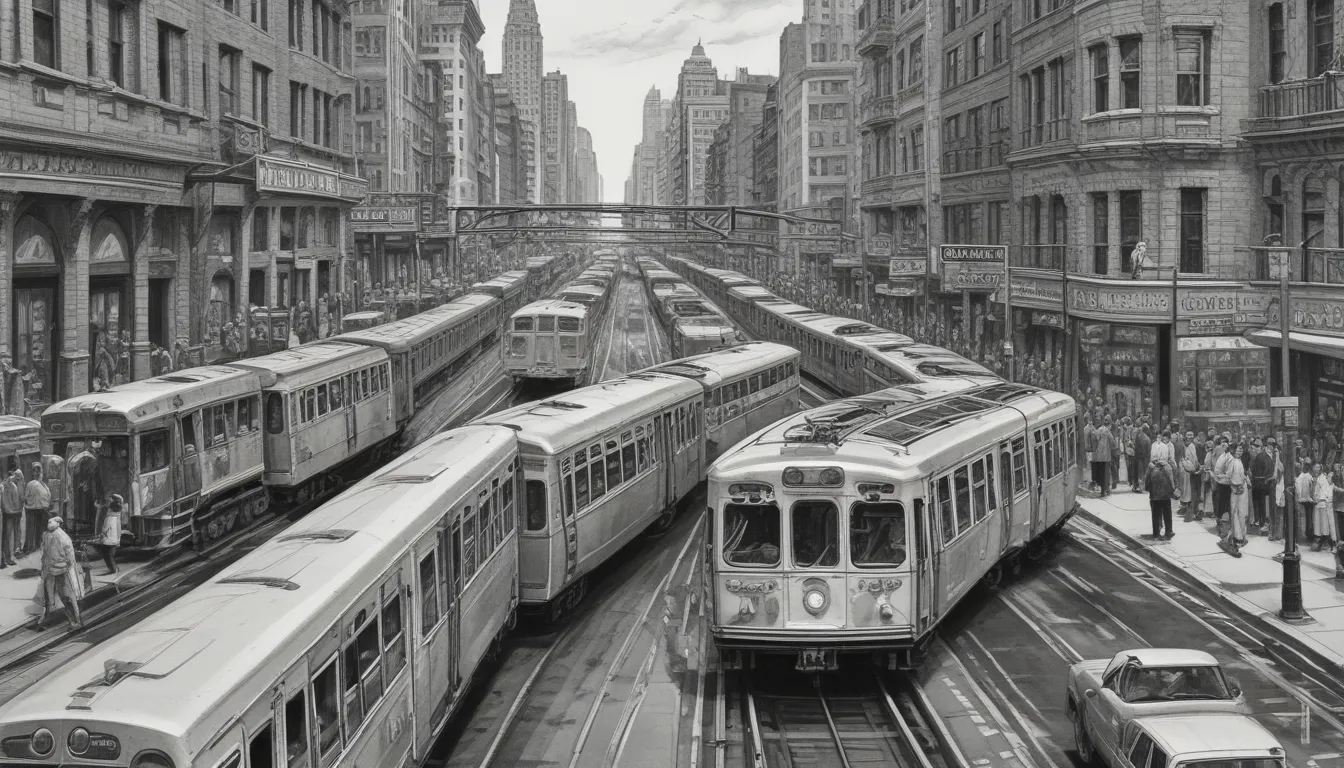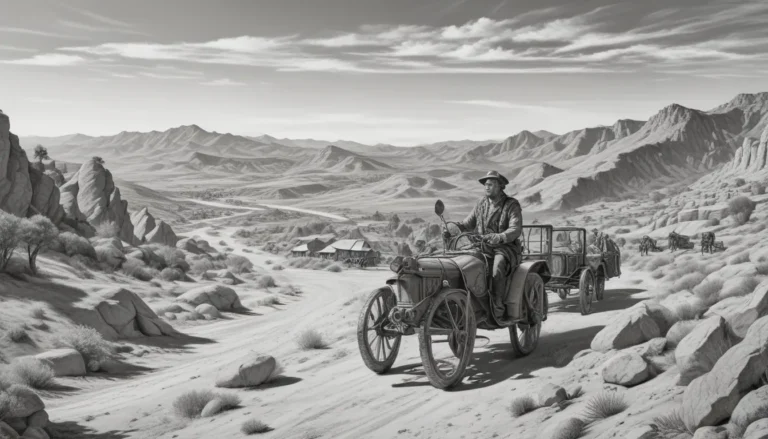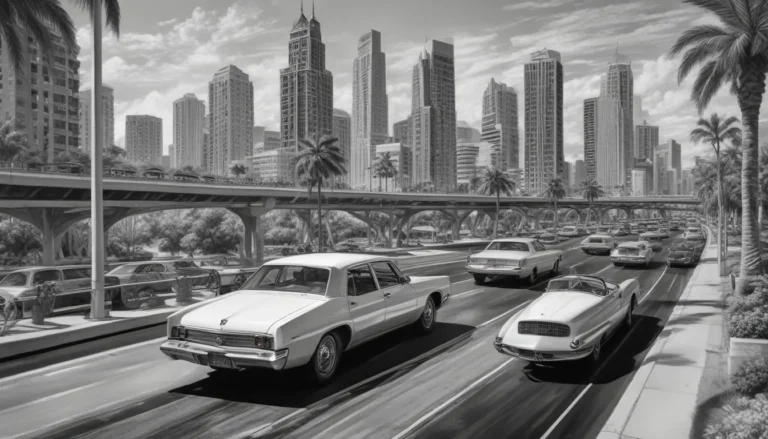The images in our articles are for illustrative purposes only and may not exactly match the content. They are intended to capture your interest and complement the text, not to replace it.
Newark, New Jersey, is a bustling city with a rich history and a thriving economy. As a pivotal transportation and infrastructure hub, Newark plays a crucial role in connecting the region and fostering its growth. The city’s network of roads, bridges, public transportation, and airport are vital to its functionality and development. Understanding the intricacies of transportation and infrastructure in Newark is essential to appreciating the city’s vibrancy and the challenges it faces. In this article, we will delve into nine captivating facts about transportation and infrastructure in Newark, shedding light on the city’s essential systems and their impact on daily life and economic prosperity.
Essential Insights on Newark, New Jersey’s Transportation and Infrastructure:
- Newark boasts a lively transportation network with a historic airport, extensive public transit options, and major highways that support its economic expansion and connectivity.
- The city is dedicated to sustainable transportation practices, promoting eco-friendly alternatives like bike lanes and electric vehicle infrastructure to reduce carbon emissions and enhance the quality of life for residents.
Newark Liberty International Airport: A Historic Airfield
Established in 1928, Newark Liberty International Airport stands as one of the oldest airfields in the United States. As the nation’s sixth-busiest airport, it serves as a crucial transportation hub for the New York-New Jersey metropolitan area, catering to over 46 million passengers annually. With a wide range of domestic and international flight connections, the airport significantly contributes to the region’s connectivity and economic advancement.
Extensive Public Transportation Network in Newark
Newark boasts an extensive public transportation system comprising buses, light rail, and commuter trains, offering convenient and affordable travel options for both residents and visitors. The Port Authority Trans-Hudson (PATH) rail system connects Newark to Manhattan, while Amtrak and New Jersey Transit provide regional and national rail services, ensuring seamless connectivity within the broader transportation network.
The Iconic Pulaski Skyway: A Historic Roadway
Constructed in 1932, the Pulaski Skyway stands as a prominent elevated highway linking Newark with Jersey City and Kearny, spanning the Passaic and Hackensack Rivers. As a vital conduit for thousands of vehicles daily, the Pulaski Skyway plays a pivotal role in the regional transportation infrastructure, facilitating the smooth flow of goods and commuters throughout the area.
Newark’s Role as a Shipping and Logistics Hub
Due to its strategic location near major ports and highways, Newark serves as a crucial shipping and logistics center, facilitating the movement of goods regionally and globally. Its proximity to the Port of New York and New Jersey, one of the largest port complexes in the United States, further solidifies Newark’s importance as a key link in the international supply chain.
Newark Penn Station: A Major Rail Transportation Facility
Newark Penn Station serves as a bustling transportation hub, offering intercity and commuter rail services that connect the city to various destinations across the Northeast Corridor. With Amtrak, New Jersey Transit, and the PATH system operating from the station, thousands of passengers benefit from seamless travel options daily, underscoring its significance in the region’s transportation infrastructure.
Major Highways Crisscrossing Newark
The city of Newark is traversed by several major highways, including Interstates 78 and 280, as well as U.S. Routes 1 and 9, which intersect and converge within its borders. These critical roadways play a vital role in enabling the movement of people and goods, supporting the local economy, and facilitating efficient travel within and beyond the city.
Newark’s Vital Link in the Northeast Corridor Rail Line
As a key stop along Amtrak’s Northeast Corridor, Newark assumes a pivotal role in the nation’s busiest and most essential rail line. With high-speed rail connections offering swift and convenient travel options for passengers commuting between major East Coast cities, Newark’s significance as a transportation nexus is further emphasized.
The Impact of Transportation and Infrastructure on Newark’s Economic Development
Newark’s robust transportation and infrastructure systems are integral to the city’s economic development and vitality. By facilitating the movement of people, goods, and services, these essential networks contribute to the region’s commercial growth, attract business investments, and solidify Newark’s position as a dynamic center for commerce and trade.
Commitment to Sustainable Transportation Initiatives
Recognizing the importance of sustainable transportation solutions, Newark has undertaken various initiatives to promote eco-friendly mobility options. From expanding its network of bike lanes and pedestrian pathways to investing in electric vehicle infrastructure, the city is dedicated to fostering environmentally conscious transportation practices that enhance livability and reduce carbon emissions.
Conclusion
Transportation and infrastructure form the backbone of any city’s functionality and growth. In Newark, New Jersey, these crucial components play key roles in connecting people, facilitating economic activities, and enhancing the overall quality of life. With a rich history and a strategic location, Newark continues to evolve and improve its transportation and infrastructure systems to meet the needs of its residents and businesses. By embracing sustainable and efficient transportation practices alongside resilient and modern infrastructure, Newark can thrive and offer a high quality of life for its community.
FAQs
What are the major modes of transportation in Newark, New Jersey?
The major modes of transportation in Newark include buses, trains, light rail, and an extensive road network. Additionally, Newark Liberty International Airport serves as a significant transportation hub for the region.
How is Newark’s infrastructure being improved?
Newark’s infrastructure is being enhanced through various initiatives aimed at modernizing roads, bridges, public facilities, and implementing sustainable and resilient infrastructure practices.
What role does transportation play in Newark’s economy?
Transportation plays a critical role in Newark’s economy by facilitating the movement of goods and people, supporting businesses, and attracting investments and development to the city.
We are committed to providing reliable and engaging content that is contributed by real users like you. Each fact on our site undergoes a meticulous review process by our dedicated editors to ensure accuracy and credibility. Explore and learn with us, trusting in our commitment to quality and authenticity.






